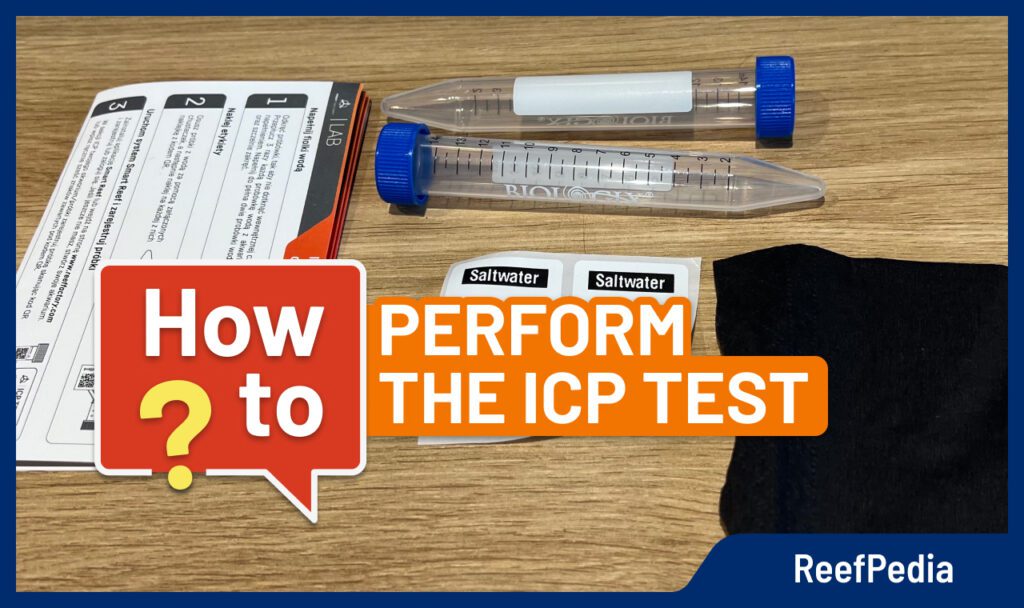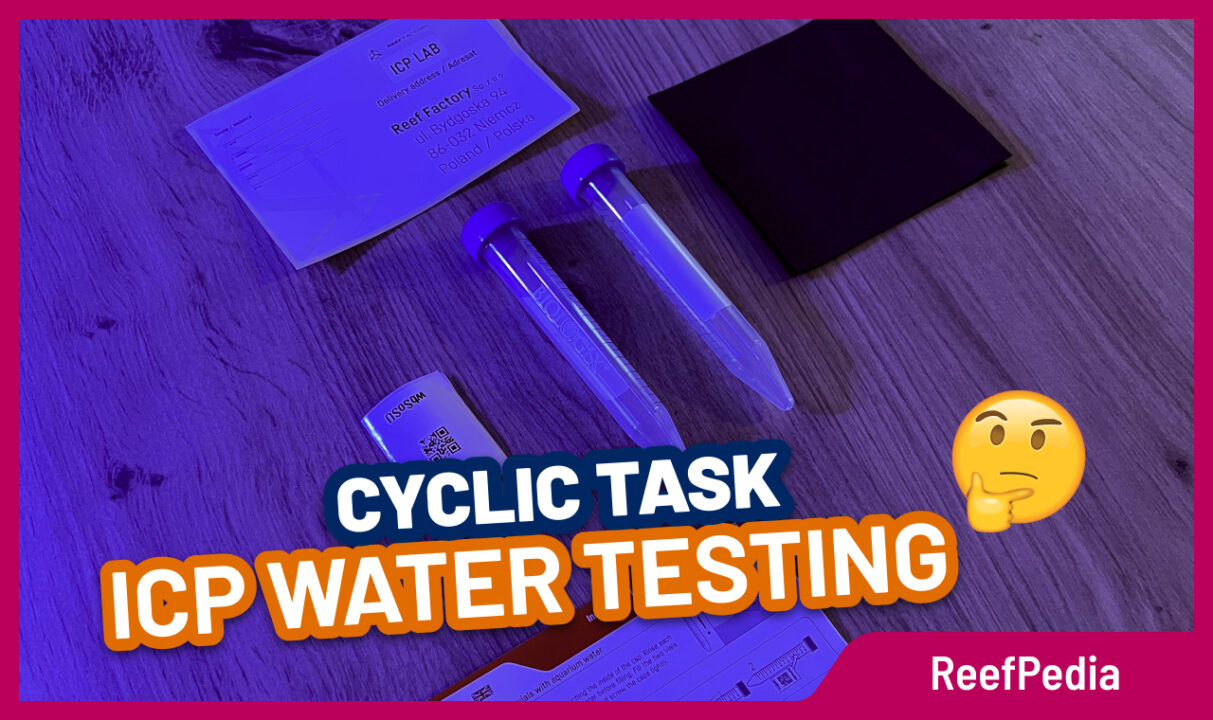Table of Contents
This article is part of the “Cyclic tasks” series, intended for beginner aquarists who are looking for the basics of running a saltwater aquarium, or for those who are considering setting up a tank and want to understand the amount of work involved.
In the article What work on the aquarium should be done periodically you’ll find a complete list of tasks, along with links to articles that expand on individual topics.
In the article you’re reading right now, I’ll discuss the topic of sending water samples to ICP analysis regularly. You’ll learn why it makes sense to have this task on your cyclic tasks’ list.
Happy reading!
What’s ICP anyway?
It’s the most accurate method currently available for determining the elemental composition of seawater and RO. ICP-OES is an Inductively Coupled Plasma Optical Emission Spectrometry technique. In short, due to the high temperature of the plasma, the spectrometer is able to determine the level of both major and trace elements from a single water sample, which gives us great control over the stability of the tank.
If you want to learn more about ICP-OES analysis, the topic has been described in more detail in a specialized article in the water chemistry category on ReefPedia.
What does the ICP test?
The ICP-OES examines over 40 different elements:
Sodium (Na), Calcium (Ca), Magnesium (Mg), Potassium (K), Strontium (Sr), Boron (B), Bromine (Br), Sulfur (S), Lithium (Li), Beryllium (Be), Barium (Ba), Titanium (Ti), Vanadium (V), Chromium (Cr), Manganese (Mn), Iron (Fe), Cobalt (Co), Nickel (Ni), Copper (Cu), Zinc (Zn), Aluminum (Al), Silicon (Si), Arsenic (As), Antimony (Sb), Tin (Sn), Cadmium (Cd), Selenium (Se), Molybdenum (Mo), Mercury (Hg), Phosphorus (P), Phosphate (PO4), Lead (Pb), Iodine (I), Tungsten (W), Scandium (Sc), Lanthanum (La).
Why perform ICP tests periodically?
The result of the ICP analysis shows us whether there are deficiencies or excesses of certain elements in the aquarium. Thanks to the tests, we can determine whether dirt, e.g. from rusting metal elements in the tank, gets into the water.
Thanks to the information that something is polluting our water, we are able to detect the cause and eliminate the problem before a tragedy occurs in the aquarium.
By regularly sending ICP tests, we will be able to supplement the water with the missing macro- and microelements that may be important for animals in the aquarium.
Another form of sending water for an ICP test is the intervention form. This means that we send the sample when something disturbing happens and our animals already have a health problem. ICP analysis allows us to determine what the problem is.
I strongly recommend getting into the habit of sending water for testing periodically. This will allow you to act preventively and avoid losses.

Instruction on how to perform the ICP test
The ICP (Inductively Coupled Plasma) test is an extremely important tool for marine aquarists who want to keep the animals in their aquarium in the top condition. This test allows the chemical composition of the aquarium water to be examined accurately, allowing any problems to be detected quickly and appropriate action to be taken.
Summary
The issue of ICP analysis is still viewed in two ways by marine aquarists. On the one hand, there are people who understand how important it is to regularly send water for ICP testing and benefit from it, on the other hand, we have people who take such action only when something bad happens in the aquarium. The choice is yours!
About the author

Marek Protasewicz
Reefkeeping has been my passion for over 10 years now. I love learning. The hobby has taught me many valuable lessons, patience being the best example. Combining work and passion is my path. I run Crazy Coral, a marine aquarium shop, for a number of years. Building this business from the scratch I learnt from my own mistakes at a heavy cost.
Later I managed a project aimed at development of methods for quick growth of Corals in non-natural conditions. The project was carried out by Get Sales, Poland. Presently, I am responsible for distribution strategy at Reef Factory, of which I am a co-founder. The company produces smart devices for marine aquaristics. The last projects I have been involved in are Social Reef and ReefPedia.



